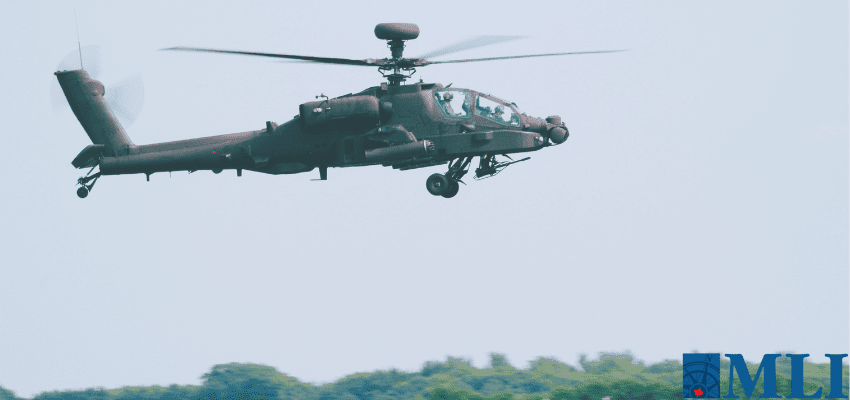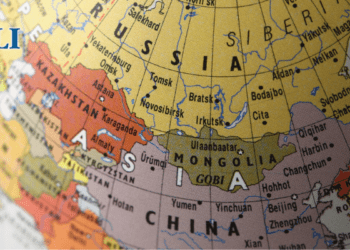This article originally appeared in The Hub.
By Richard Shimooka, February 24, 2025
The upcoming federal election is already underway. While the writ has yet to be officially dropped, unofficially, the contours of the campaign are shaping up. Unsurprisingly given the context of the moment, foreign and defence policy will be some of—if not the—biggest issues defining the contest.
Historically, foreign and defence policy have languished as, at best, tertiary election issues. But with an unwelcome threat to our sovereignty being reiterated on a near-daily basis from our closest neighbour, and with an international order that is destabilizing by the day, Canada’s place in the world is a question the candidates looking to lead the country cannot afford to ignore.
To date, the three front-runners to be either the next PM (via the Liberal leadership race) or the one after that (via the federal election) have begun to release policy plans on this front, each in varying degrees of detail.
Pierre Poilievre
- Expanding the Iqaluit forward operating location into a full base with permanently deployed fighters and other capabilities.
- Acquiring two Polar Icebreakers and two lighter Arctic icebreakers, to be delivered by 2029.
- Double the size of the 1st Patrol Group of the Canadian Rangers, from 2,000 to 4,000 Rangers.
- Finding cost savings in the $15.5 billion foreign aid budget to fund these promises.
Mark Carney
- Defence spending to reach 2 percent of GDP by 2030.
- Focus defence spending away from American programs to domestic ones.
Chrystia Freeland
- Defence spending to reach 2 percent by 2027.
- Exclude procurements from the Canadian International Trade Tribunal review.
- Expanded use of Urgent Operational Requests.
- Increase personnel salaries by 50 percent.
The perils of promising too much
While Canadians clearly want to see their next leader taking foreign and defence issues seriously, there is plenty of potential peril for candidates and the military in making grand campaign promises. What might seem like relatively innocuous decisions can have severe repercussions if actually implemented.
Two historic cases come to mind: Chrétien’s promise to cancel the Sea King helicopter replacement, the EH-101, and Justin Trudeau’s promise to cancel the F-35 and buy an alternative more suited to Canada’s needs, with a plan to reinvest any savings into the shipbuilding program.
The motivations behind promises like these are evident: try to distinguish oneself from the failing of the incumbent and provide bold new policy ideas. It’s an attempt to put something, anything, in the shop window to provide even a minimal amount of credibility on the file.
Yet there are intense risks involved with tinkering with defence programs, as they operate fundamentally differently than any other area of government policy. Procurements for example take years, if not decades, to identify requirements, establish a competition, and implement the selection. Similarly, military personnel policy has similarities with demographic pyramids—it inducts individuals in their late teens, the number which then gets whittled down through attrition over their decades of service. It is extremely difficult to bring new individuals into service later in life.
Domestic policy programs like a tax cut or new benefits scheme, by comparison, are a relatively straightforward process for a government—some policies can be implemented in months if not weeks. Even large civil infrastructure projects do not entail nearly the same risk as defence projects. Program managers planning a bridge do not have to worry about how adversaries’ technological development may impact its utility to the public, or the potential electronic warfare updates required in a decade or two’s time.
Both Chrétien and Trudeau described the programs they wished to cancel as unaffordable and not aligned with Canada’s needs. Chrétien famously described the EH-101 as a “Cadillac purchase” and promised to cancel it “with a stroke of his pen.”
For whatever reason, newly elected governments feel as if they have to then follow through with these campaign promises, no matter how poorly thought out they come to realize they were. Both Chrétien and Trudeau came to deeply regret their election promises. The failed replacement of the aging Sea King led to years of embarrassing accidents that made it the poster child for the dysfunctional state of the CAF in the 1990s and 2000s.
Similarly, the decision to cancel the F-35 purchase in 2015 would haunt the Trudeau government for years to come. It resulted in the abortive purchase of 18 Super Hornets, followed by the indignity of acquiring surplus Australian Hornets, and then the ultimate humiliation of re-selecting the F-35 almost seven years later. Meanwhile, the debacle contributed to the effective collapse of the personnel and sustainment systems that undergird the tactical fighter fleet, leading to a much diminished military capability.
Both are cautionary tales for Poilievre, Carney, and Freeland today. The Canadian Armed Forces are in an extremely vulnerable state with entire capabilities hanging on by the barest of threads. DND has outlined plans to modernize the military that are bearing fruit, but given the CAF’s current state, there is no margin of error and it cannot suffer from any ill-conceived political disruptions. In this moment of heightened uncertainty, getting it wrong could have lasting and disastrous consequences for Canada’s continued sovereignty.
Carney promising to repatriate defence spending away from U.S. companies is one such example. While on the surface this may seem unobjectionable and reflects popular sentiment in the country, Canada’s military operates in a binational command with the U.S. and requires high levels of interoperability. In many areas, alternative options to American systems don’t exist. Altering programs mid-stream, to a non-existent domestic production capability, would be grotesquely expensive and cause major disruptions at a time when the military can least afford it.
Similarly, Poilievre’s promise to pay for defence spending increases through reductions in foreign aid is a misstep. To some degree, the proposal is not too noteworthy: every incoming government has reoriented foreign aid spending according to their political aims. However, large portions of the budget fund critical priorities, such as aid for Ukraine or conflict prevention activities that are the proverbial ounce of prevention that obviates a pound of cure and shouldn’t be cut. Moreover, unless Canada eliminates the entire $15.5 billion foreign aid budget and redirects it to defence, it will not come close to paying for the promised improvements.
Freeland, on the other hand, has the most robust policy platform between the three, and yet, given the momentum of the Liberal leadership race, will almost certainly not be able to enact it.
The right message
As I outlined last week, each candidate must grapple with the complex reality that Canada is being forced to reorient its foreign and defence policies towards North America and away from NATO. How they respond to this challenge is a good indication of how seriously we should take them on this suddenly all-important file.
Poilievre, Carney, and Freeland could do worse than emulating the approach that Stephen Harper employed during the 2006 election: make broad promises to rehabilitate the military and suggest some broader political direction, but avoid getting into policy weeds. Simply suggesting that current spending will be preserved, and potentially accelerated if possible, will likely be sufficient for most voters.
They should take the Hippocratic Oath when it comes to their defence policy statements: first do no harm. No real political advantage will be had here by promising huge reorientations of defence policy, but the subsequent risk to the CAF is abundantly clear.
Richard Shimooka is a Senior Fellow at the Macdonald-Laurier Institute who writes on defence policy.






